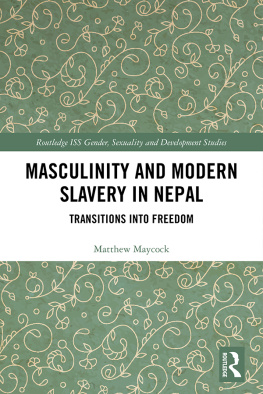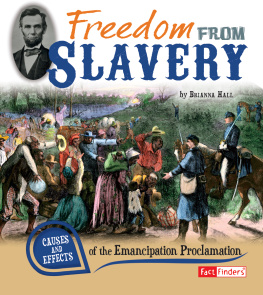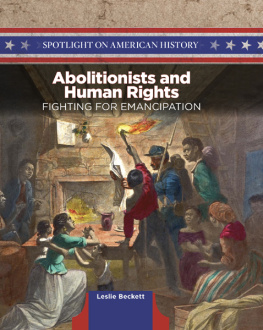SLAVERY and FREEDOM in Savannah
SLAVERY and FREEDOM in Savannah
Edited by
Leslie M. HarrisandDaina Ramey Berry
Published in cooperation with Telfair Museums
This project is made possible by a grant from the U.S. Institute of Museum and Library Services.
2014 by the University of Georgia Press
Athens, Georgia 30602
www.ugapress.org
All rights reserved
Designed by Richard Hendel
Set in Miller and Clarendon types
by April Leidig at Copperline Book Services
Manufactured by Thomson-Shore, Inc.
The paper in this book meets the guidelines for permanence and durability of the Committee on Production Guidelines for Book Longevity of the Council on Library Resources.
Printed in the United States of America
18 17 16 15 14 P 5 4 3 2 1
Library of Congress Cataloging-in-Publication Data
Slavery and freedom in Savannah / edited by Leslie M. Harris and Daina Ramey Berry.
pages cm
Includes bibliographical references and index.
ISBN 978-0-8203-4410-2
(pbk. : alk. paper)
ISBN 0-8203-4410-9
(pbk. : alk. paper)
1. African Americans Georgia Savannah History. 2. Slavery Georgia Savannah History. 3. Antislavery movements Georgia Savannah History. 4. Slaves Emancipation Georgia Savannah. 5. Free African Americans Georgia Savannah History. 6. African Americans Georgia Savannah Social life and customs. 7. Savannah (Ga.) History. 8. Savannah (Ga.) Race relations. 9. Savannah (Ga.) Social life and customs. I. Harris, Leslie M. (Leslie Maria), 1965 II. Berry, Daina Ramey.
F294.S2S58 2014
306.3'6209758724dc23
2013026911
ISBN for digital edition: 978-0-8203-4706-6
British Library
Cataloging-in-Publication Data available
Contents
Lisa Grove
Tania Sammons
Leslie M. Harris and Daina Ramey Berry
James A. McMillin
Timothy Lockley
Susan Eva ODonovan
Jeffrey Robert Young
Leslie M. Harris and Daina Ramey Berry
Janice L. Sumler-Edmond
Jacqueline Jones
Jonathan M. Bryant
Bobby J. Donaldson
Sidebars
Walter J. Fraser Jr.
Christina Snyder
Jermaine Thibodeaux
Mark R. Finlay
Alisha M. Cromwell
Karen Cook Bell
Kwesi DeGraft-Hanson
Paulette Thompson
Alan R. Hoffman
Feay Shellman Coleman
Tania Sammons
Jermaine Thibodeaux
Paul Pressly
Corrie Hand
Paulette Thompson
Erik Calonius
Dawn Herd-Clark
Jacqueline Jones
Tracey Jean Boisseau
Jenifer L. Barclay
Hilary N. Green
Mark R. Finlay
Gregory Mixon
Feay Shellman Coleman
Anne Roise
Foreword
As the oldest art museum in the South, Telfair Museums in the heart of Savannahs Historic District has a vital role to play in telling the story of urban slavery.
Beginning with the preservation of the former slave quarters at the Owens-Thomas House in the mid-1990s, Telfair Museums has demonstrated its commitment to promoting new understanding of this important topic. The thousands of visitors who walk through our doors each year hear a broad story about the site and all of its inhabitants, including free and enslaved men, women, and children.
We are proud to further expand the publics understanding of American history and culture by exploring the complexities of urban slavery and freedom in the American South with this valuable publication, Slavery and Freedom in Savannah.
Material generated by prominent national and international scholars for this book will provide essential information from which we will further develop the histories of Telfair Museums two National Historic Landmark buildings the Owens-Thomas House and Telfair Academy of Arts and Sciences. This publication will also offer students, academics, and lay historians the opportunity to discover a deeper, more complete story about our collective past.
Coeditors Leslie M. Harris and Daina Ramey Berry have thanked the numerous people involved with this project in their acknowledgments. I extend my heartfelt appreciation to those individuals as well. I would also like to recognize the Institute of Museum and Library Services, which awarded the Telfair a large grant used to provide funding for the October 2011 symposium Slavery and Freedom in Savannah and this subsequent book. Other financial assistance for the symposium came from the Johanna Favrot Fund for Historic Preservation of the National Trust for Historic Preservation, the City of Savannah, and the Friends of the Owens-Thomas House. Partnering organizations for the symposium included the Second African Baptist Church and Live Oak Public Libraries. Finally, Im grateful for our ongoing partnership with the University of Georgia Press. Their professionalism and attention to detail have secured in this publication a significant and useful document that will be turned to for years to come.
LISA GROVE, Director/CEO
Telfair Museums
Preface
I believe that the truth about any subject only comes when all the sides of the story are put together, and all their different meanings make one new one the whole story is what Im after.
Alice Walker, Beyond the Peacock
With the preservation of the Owens-Thomas House slave quarters in the mid-1990s, Telfair Museums began introducing visitors to a broader spectrum of its former inhabitants than before white and black; men, women and children; enslaved and free. This new effort in interpretation began a process of telling a more complete story, the whole story, as Alice Walker would say, about the house and all of its inhabitants. Slavery and Freedom in Savannah focuses on the lives and labor of the enslaved people who built, maintained, and serviced the house, and contextualizes the Owens-Thomas House within the social environment of its neighborhood, where more than 50 percent of the residents were people of color enslaved and free. Special emphasis is given to the Telfair family and their enslaved servants in an effort to bridge and contextualize their story as part of Telfair Museums history.
For over a half century, Telfair Museums architecturally significant Owens-Thomas House has been interpreted as the home and stylish showplace of two former owners: Richard Richardson, the merchant and banker who first commissioned the residence, and later George Welshman Owens, plantation owner, alderman, mayor, Georgia state senator and representative, and U.S. congressman. Attention was also paid to the most famous guest at the house, the Revolutionary War hero the Marquis de Lafayette, who stayed there in 1825 when the house was between owners and run as an upscale boardinghouse. The Telfair Academy of Arts and Sciences (now Telfair Museums), following the bequest of Margaret Gray Thomas, opened the Owens-Thomas House to the public for tours in 1954. Tours focused primarily on the architecture and decorative arts, with limited information about the families who owned and lived in the house and nothing about the enslaved household workers. In 2005 and 2006, the museum received two National Endowment for the Humanities consultation and planning grants, which allowed the institution to move forward with its reinterpretation efforts. In 2010, the museum received a Museums for America grant from the Institute of Museum and Library Services, which supported the Slavery and Freedom in Savannah symposium presented in October 2011 and the publication of this book, which includes material presented at the symposium. The Johanna Favrot Fund for Historic Preservation of the National Trust for Historic Preservation, the City of Savannah, the Second African Baptist Church, Live Oak Public Libraries, and the Friends of the Owens-Thomas House also supported the symposium.











